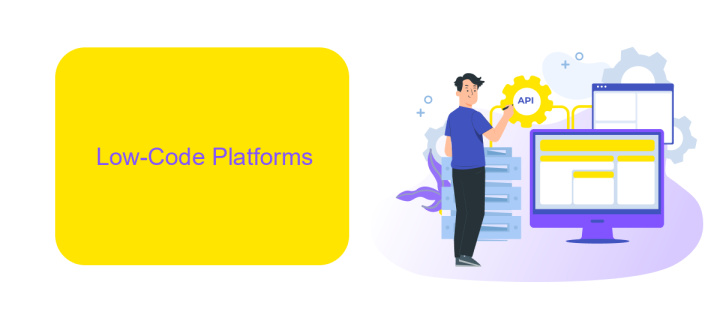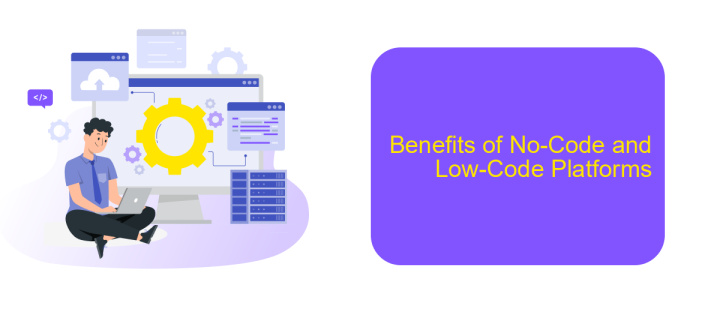No-Code Low-Code Definition
No-code and low-code platforms are revolutionizing the way software is developed, enabling individuals with minimal or no programming skills to create applications quickly and efficiently. These tools offer intuitive interfaces and pre-built components, reducing the reliance on traditional coding. This article explores the definitions, benefits, and potential limitations of no-code and low-code development, providing insights into their growing impact on the tech industry.
No-Code Platforms
No-code platforms are revolutionizing the way businesses and individuals develop applications by eliminating the need for traditional coding skills. These platforms offer intuitive drag-and-drop interfaces that allow users to create complex applications quickly and efficiently. By leveraging no-code platforms, organizations can significantly reduce development time and costs, making it accessible for non-technical users to bring their ideas to life.
- Visual Development: Drag-and-drop components to build applications.
- Pre-built Templates: Use templates to jumpstart development.
- Integrations: Easily connect with other tools and services.
- Scalability: Build applications that can grow with your business.
- Cost-Effective: Reduce the need for a large development team.
One notable service that enhances the capabilities of no-code platforms is ApiX-Drive. This tool allows users to set up integrations between various applications without writing a single line of code. ApiX-Drive supports a wide range of services and automates workflows, making it easier for businesses to synchronize data across different platforms. By incorporating ApiX-Drive, users can streamline processes and improve efficiency, further maximizing the potential of no-code platforms.
Low-Code Platforms

Low-code platforms are designed to simplify the development process by providing a visual interface and pre-built components. These platforms allow developers to create applications with minimal hand-coding, making it easier to build, test, and deploy software quickly. They are particularly useful for businesses looking to accelerate their digital transformation efforts without the need for extensive programming knowledge.
One of the key advantages of low-code platforms is their ability to integrate with various services and systems. For instance, ApiX-Drive is a service that facilitates seamless integration between different applications, enhancing the functionality of low-code platforms. By using ApiX-Drive, businesses can automate workflows and synchronize data across multiple systems, significantly improving efficiency and reducing the potential for errors. This makes low-code platforms an invaluable tool for organizations aiming to streamline operations and improve productivity.
Key Differences Between No-Code and Low-Code

No-code and low-code platforms both aim to simplify software development, but they cater to different user bases and project complexities. No-code platforms are designed for users with little to no programming knowledge, enabling them to build applications through visual interfaces and pre-built modules. Low-code platforms, on the other hand, are targeted at developers who have some coding experience and need to accelerate the development process by reducing manual coding efforts.
- User Skill Level: No-code is for non-developers, while low-code is for developers with some coding knowledge.
- Customization: No-code offers limited customization, whereas low-code provides more flexibility for custom coding.
- Complexity of Projects: No-code is suitable for simple applications, while low-code can handle more complex projects.
- Integration Capabilities: No-code platforms often rely on built-in integrations, whereas low-code platforms can integrate with external services like ApiX-Drive for more advanced connectivity.
- Development Speed: Both aim to speed up development, but low-code offers a balance between speed and customization.
In summary, the choice between no-code and low-code depends on the user's technical skills and the complexity of the project. No-code platforms are ideal for quick, simple solutions, while low-code platforms offer more advanced capabilities and integration options, such as those provided by ApiX-Drive, making them suitable for more complex applications.
Benefits of No-Code and Low-Code Platforms

No-code and low-code platforms offer numerous benefits, making them highly attractive for businesses of all sizes. These platforms significantly reduce the time and cost associated with traditional software development, enabling quicker deployment of applications and solutions.
One of the key advantages is the democratization of software development. Non-technical users can create and manage applications, thus reducing the dependency on professional developers. This fosters innovation and allows organizations to respond swiftly to market changes.
- Faster time to market
- Cost-effective development
- Empowerment of non-technical users
- Scalability and flexibility
- Seamless integrations with services like ApiX-Drive
Moreover, platforms like ApiX-Drive facilitate seamless integrations, allowing businesses to automate workflows and connect various applications without extensive coding. This capability enhances operational efficiency and ensures that different systems work harmoniously together, providing a comprehensive and streamlined user experience.
Applications of No-Code and Low-Code Platforms
No-code and low-code platforms have revolutionized the way businesses develop applications by enabling non-technical users to create functional software without extensive programming knowledge. These platforms are extensively used for building internal tools, automating workflows, and developing customer-facing applications quickly and efficiently. For instance, marketing teams can create landing pages, forms, and automated email campaigns without relying on IT departments, thereby accelerating project timelines and reducing costs.
Furthermore, these platforms are instrumental in setting up integrations between various services and applications. Tools like ApiX-Drive facilitate seamless connections between different software systems, allowing businesses to automate data transfers and synchronize information across platforms effortlessly. This capability is particularly valuable for organizations looking to streamline operations, enhance productivity, and ensure data consistency without the need for complex coding or technical expertise.
FAQ
What is No-Code/Low-Code?
Who can benefit from No-Code/Low-Code platforms?
What types of applications can be built with No-Code/Low-Code platforms?
How do No-Code/Low-Code platforms handle integrations with other services?
Are No-Code/Low-Code platforms secure?
Apix-Drive is a simple and efficient system connector that will help you automate routine tasks and optimize business processes. You can save time and money, direct these resources to more important purposes. Test ApiX-Drive and make sure that this tool will relieve your employees and after 5 minutes of settings your business will start working faster.

